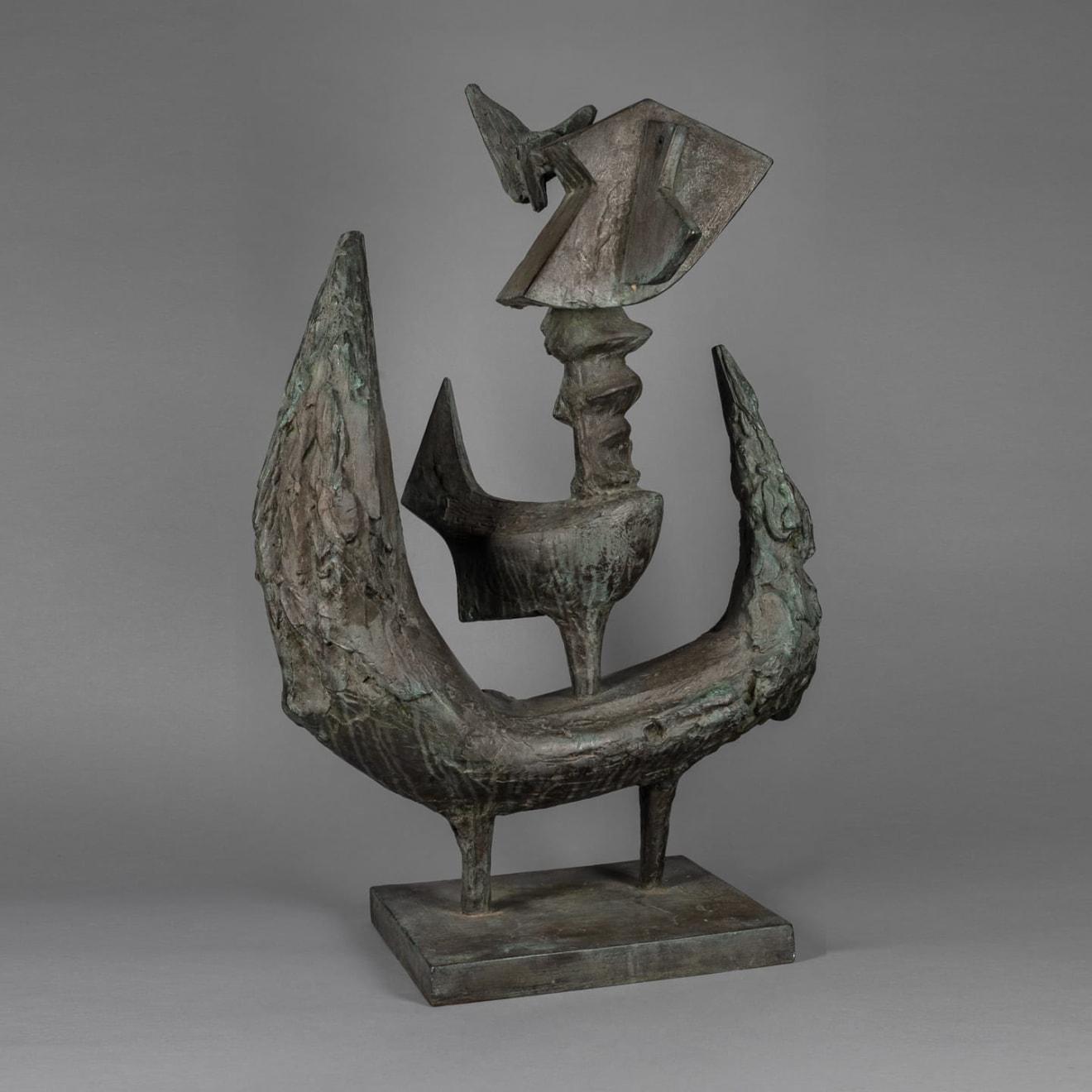Bernard Meadows 1915-2005
83.8 x 58.4 x 27.9 cm
Sculpted in 1958, Cock was produced by Bernard Meadows during the latter end of his animal period, not long before he turned his focus to human subjects in the 1960s. Meadows' sculptures display several contradictions, in that they are at once organic and mechanised, threatening and vulnerable, abstract and yet still containing a poignant emotional realism. This is one of several sculptures of cocks Meadows produced, the first of which was commissioned for a school near St Albans in 1954. The art historian Alan Bowness has suggested that Meadows sculpted animals ‘as vehicles for the human figure’ because in their emotional expression ‘these animal sculptures carry an emotional charge that is immediately translatable into human terms’.
The juxtaposition between organic forms and conflict are nodded to in Meadows’ work with his human or animal figures often considered to be representative of the damaged and battered bodies wrought by war and violence. Indeed, through their welded metal or pitted bronze appearance they seem both mechanised and taut with human frailty. The present sculpture stands tall and proud, with the bird’s physique suggesting strength, whilst the textures on its surface denote feathers and growth that are equally reminiscent of something unnatural perhaps unhealthy. The frenzied textures found across this sculpted bird were achieved through a process that involved roughing out plaster on an armature, which once dry was followed by the application of a further layer to be carved thereafter. As a result of this process, Meadows' sculptures can be seen as deeply personal, with the artist's hands almost visible in the rough textures immortalised in bronze.
Despite its material, there is an almost weightless quality to Cock due to the large vacuums at its centre that offer a lightness to its complete form. Such absences, however, also suggest a skeletal element, with the centre of the bird almost appearing spine-like and perhaps hinting at the destiny of any animal.
Meadows’s
works are held in the collections of MoMA, New York; Tate, London; Victoria
& Albert Museum, London; National Galleries of Scotland, Edinburgh.
Provenance
Private collection, UKOffer Waterman, 2005
Private collection, UK




